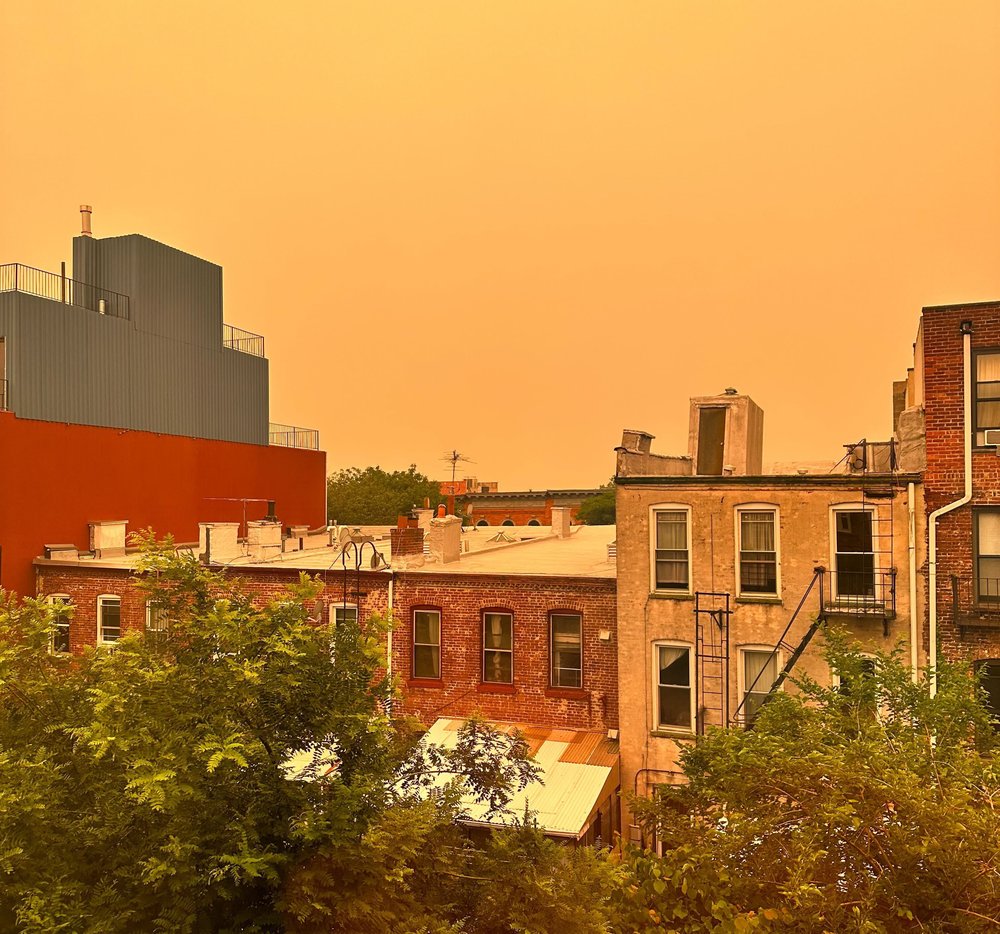Canadian wildfire smoke likely to return to NYC and become 'a new norm,' experts say
May 17, 2024, 12:01 p.m.
The smoke from Canada has already caused air quality to drop sharply in parts of the Midwest.

The scene in Bushwick, Brooklyn during last year's smoke crisis.
The Big Apple should prepare for an orange hazy blanket of smoke from Canadian wildfires to return again this summer, climate experts tell Gothamist.
Last year, Canada had the worst fire season on record, burning 45.5 million acres, about the size of North Dakota. The smoke blew south and smothered New York City for three memorable days in June, one day in July and returned once again in October. New Yorkers experienced the worst air quality in recent memory as particulate matter pollution skyrocketed, resulting in an increase of more than 40% in emergency room visits for asthma-related illness per day during the June smoke crisis.
Experts say the choking fumes were not a one-time event, and that the smoke will become more frequent due to climate change.
“This [Canadian wildfire smoke] is a new norm. This is real,” said Mark Wysocki, a Cornell University professor who retired last month after decades serving as the New York State climatologist. “We're going to have to have an attitude adjustment here. We're going to have to start dealing with the fact now that we're going to have air quality alerts more often.”
Most of Canada is classified as experiencing drought conditions. Last winter was the warmest on record in the Great White North. Many of the wildfires from last year are still burning. Experts in Canada are bracing for another long and destructive fire season.
“The warmer it gets, the more lightning we see and the atmosphere gets more efficient at sucking moisture out of that dead vegetation in the forest floor,” said Mike Flannigan, an emergency management and fire science scholar at Thompson Rivers University in British Columbia.
Much depends on the rain and most models forecast a dry summer in Canada
“That means more fuel, vegetation that's available to burn. [That] leads to those higher intensity fires that are … impossible to extinguish,” Flannigan said. He added that last year’s Canadian blazes were two and a half times worse than is typical. Already, the northern part of the Midwest has experienced poor air quality as a result of current wildfires in Canada. Earlier this week, Kansas City, Kan., had the worst air quality in the United States.
Loretta Mickley, a senior research fellow in chemistry-climate interactions at Harvard University, said there is uncertainty as to how much of an impact, if any, the recent wet spring could have on Canada’s wildfire season. The spring rains could create more fuel by encouraging growth that will later dry out and become kindle for a raging inferno, she said.
According to Mickley, the overall fire activity in Quebec is expected to double by 2050.
“This would mean a greater risk of more large smoke events for the Eastern U.S.,” she said. “We are downwind of those [Quebec] fires and we can expect more of these events going into the future.”
Was NYC unprepared for the air quality crisis? Mayor Adams draws criticism.